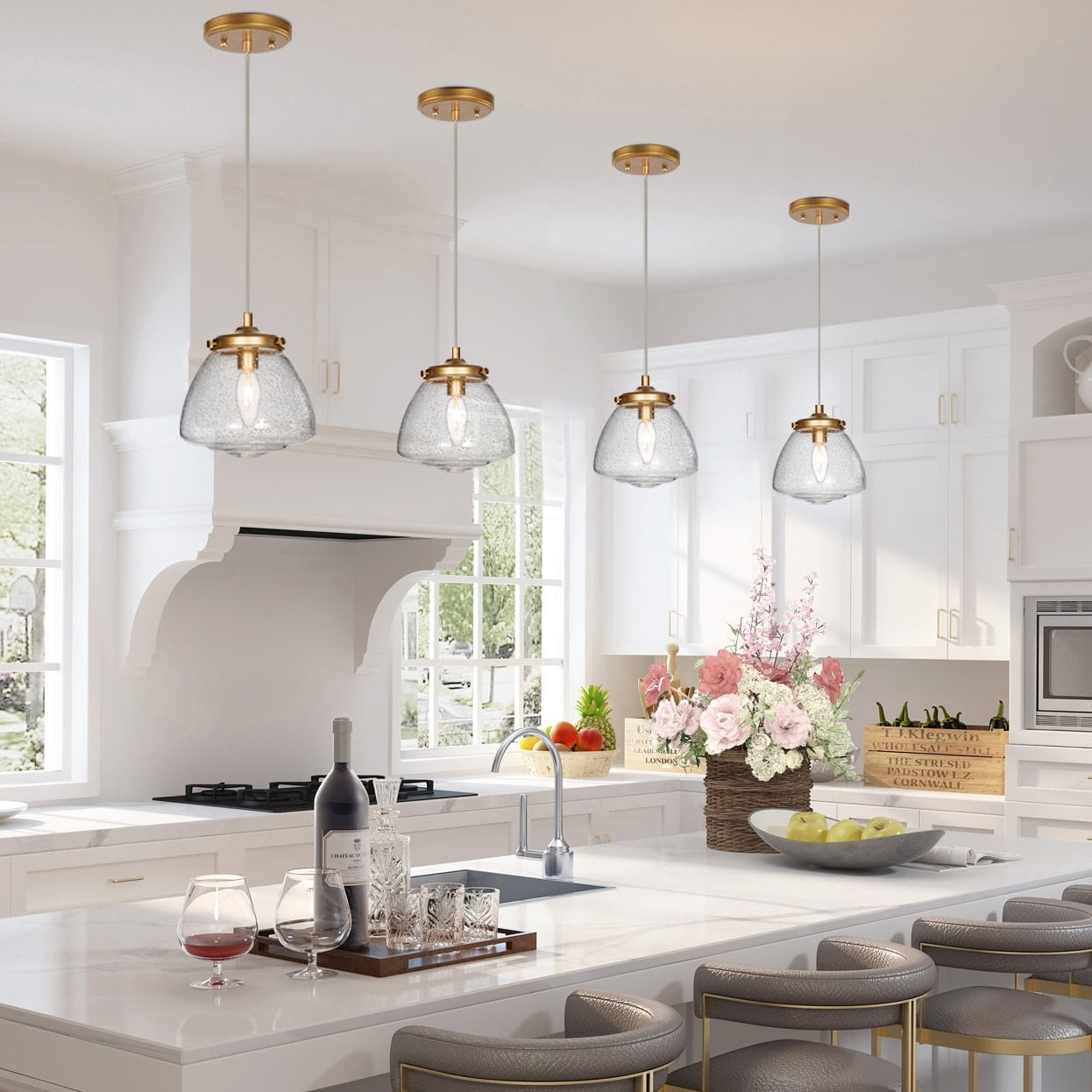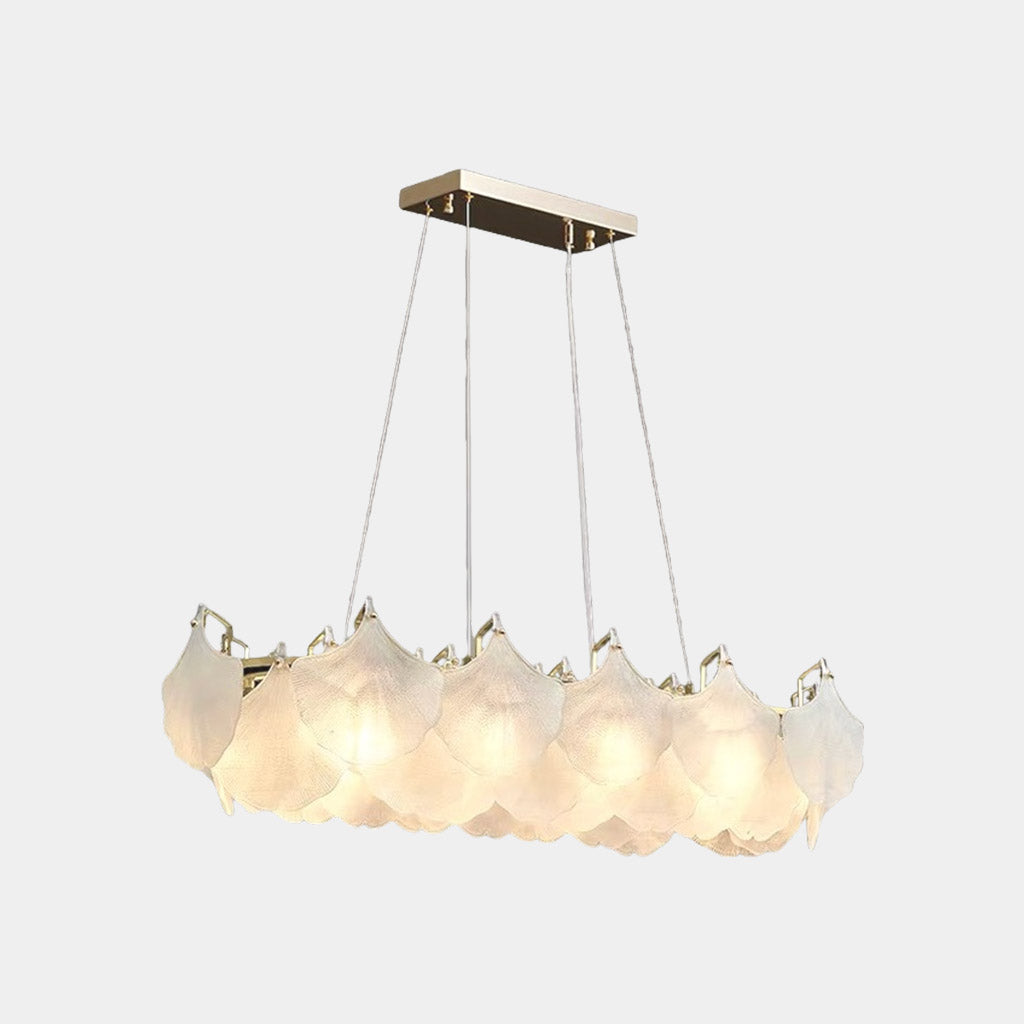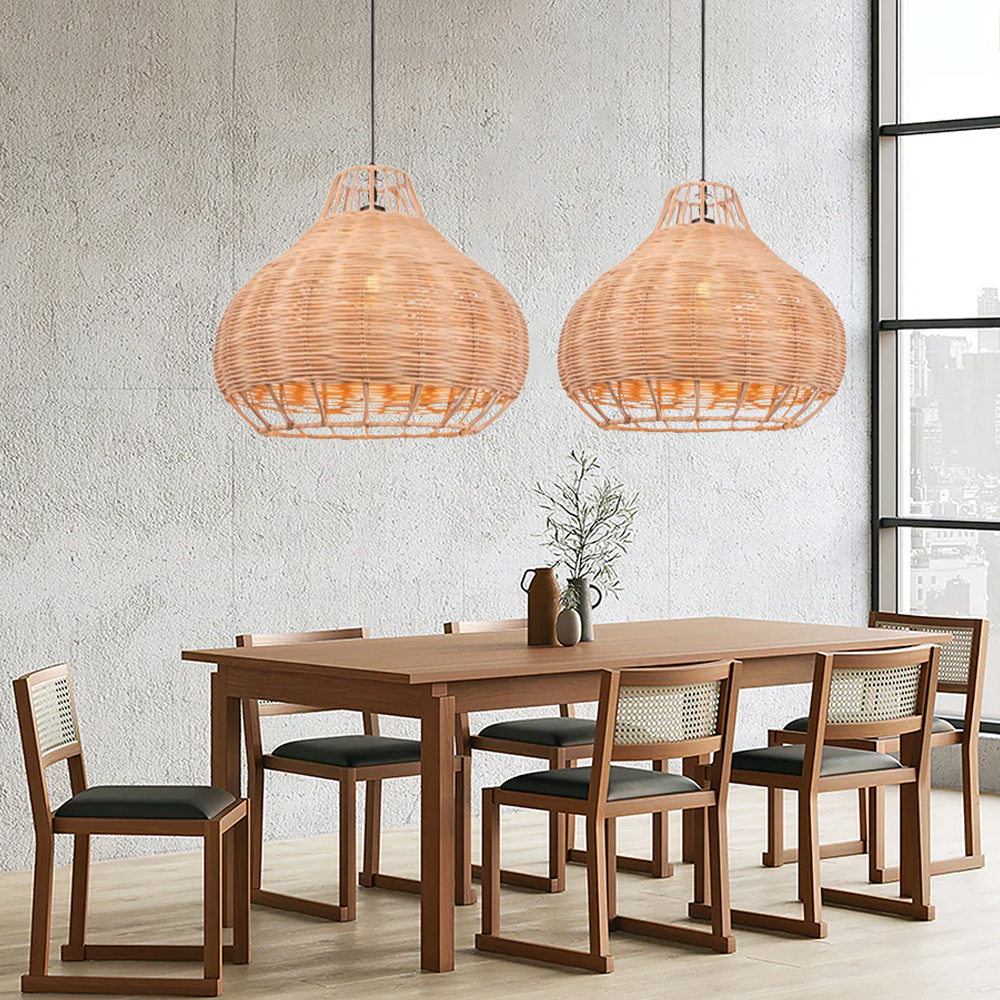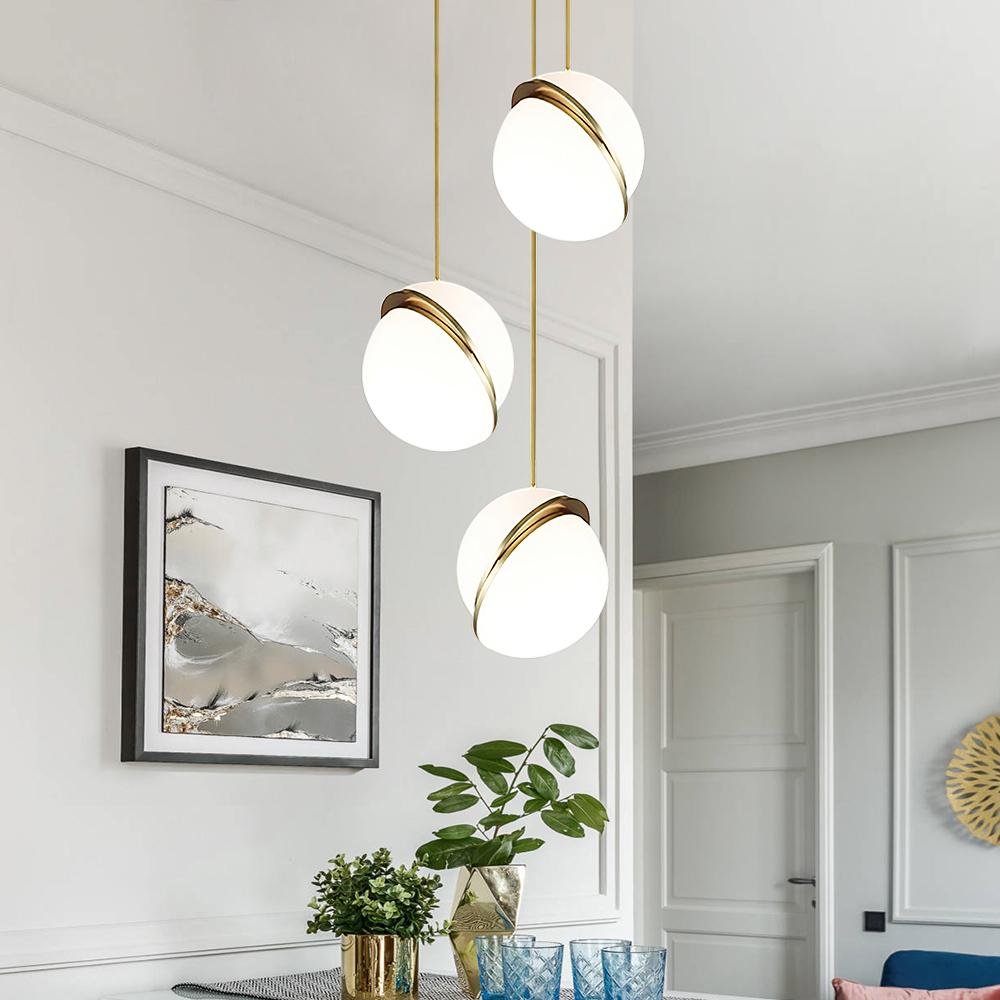Where to Hang a Pendant Light for Balanced Illumination
Wiki Article
Exactly how to Pick the Perfect Necklace Light to Enhance Your Inside Layout
Choosing the excellent necklace light requires cautious consideration of numerous aspects. The design must align with the overall style, while dimension plays a vital role in ensuring appropriate percentage. Color and surface options can improve visual appeal. In addition, evaluating light outcome is necessary for performance - Pendant Light. Recognizing these aspects can change an area, creating an inviting atmosphere. Yet, the procedure involves greater than just visual appeal; there are functionalities that must likewise be resolved
Comprehending Different Necklace Light Styles
Pendant lights can be found in a selection of styles, each offering one-of-a-kind aesthetic and functional benefits. From industrial styles that feature revealed bulbs and steel surfaces to classy glass components that evoke a sense of sophistication, the alternatives are huge. Contemporary necklace lights often stress clean lines and minimalist shapes, while vintage-inspired designs might incorporate elaborate detailing and warm tones.For those looking for a rustic charm, components made from all-natural products like timber or rattan offer a comfy feeling. In addition, multi-light necklaces can act as statement pieces, combining a number of light bulbs in a single layout for significant impact.
Each design adds differently to a space, influencing the overall ambiance and character. Comprehending these diverse pendant light styles allows designers and house owners to make enlightened selections that straighten with their interior decoration vision, improving both capability and aesthetic appeal in their environments.
Figuring Out the Right Dimension for Your Area
When choosing a necklace light, properly measuring the ceiling elevation is necessary for attaining the appropriate equilibrium in an area. In addition, calculating the scale of the component in relationship to the surrounding space guarantees that the light complements as opposed to overwhelms the design. These variables play a crucial function in creating a harmonious interior setting.Step Ceiling Elevation
To accomplish an aesthetically pleasing layout, measuring ceiling elevation is vital for picking the ideal dimension of pendant light. The elevation of the ceiling directly influences the range and percentage of the illumination component. Precede with standard eight-foot ceilings, necklace lights should usually hang around 30 to 36 inches above the surface listed below, such as a dining table or cooking area island. For higher ceilings, adjustments need to be made appropriately, as a greater setup can develop a more significant impact. When identifying the excellent height, it is vital to show on the general area dimensions and layout. Exact dimensions assist assure that the pendant light not only complements the space's layout however additionally offers sufficient lighting without frustrating the area.Calculate Fixture Range
Choosing the ideal dimension for a lighting component is vital for producing consistency in a room's layout. To compute fixture scale, one should take into consideration the dimensions of the area. A common guideline entails adding the room's size and size in feet, which gives an optimal size in inches for a necklace light. For instance, an area measuring 10 feet by 12 feet suggests a component size of approximately 22 inches. In addition, the height of the ceiling plays an important duty; taller ceilings may suit larger fixtures. Making certain the necklace hangs at an ideal height-- generally 30 to 36 inches over surface areas-- more enhances performance and aesthetic charm. Appropriately scaled components can transform a room, making it feel inviting and well-coordinated.Considering Shade and Finish Alternatives
When picking a pendant light, the interplay of shade and surface can considerably affect the overall visual of a space. Working with the light's shade combination with existing design guarantees an unified style, while the choice of surface material can boost structure and design. Thoughtful factor to consider of these aspects is essential for accomplishing a cohesive appearance in interior decoration.Color Scheme Control
Color combination control plays a crucial duty in accomplishing an unified indoor style, particularly when picking pendant lights. Selecting a necklace light that complements the existing color design boosts the general visual. A light with warm tones can produce a comfortable atmosphere in an area loaded with natural tones, while cooler shades might harmonize properly with a modern, minimalist scheme. It is vital to think about the leading shades in the space, making sure that the pendant light either mixes effortlessly or gives a striking comparison. Additionally, integrating accent shades from the scheme can link the layout with each other, creating a cohesive look. Eventually, thoughtful color sychronisation raises the visual impact of the necklace light within the indoor layout system.End Up Material Considerations

The selection of coating products for pendant lights considerably influences the general design visual of an area. Different finishes, such as matte, shiny, or distinctive, can produce varying aesthetic influences. As an example, a refined metal coating may evoke a modern, anonymous commercial ambience, while a matte or cleaned finish can offer a softer, extra organic feel. Color choices, ranging from traditional blacks and whites to dynamic tones, likewise play a necessary function in harmonizing with existing style. Furthermore, materials such as glass, timber, or ceramic can improve the pendant's personality and complement surrounding components. Ultimately, choosing the right finish material assures the necklace light not only brightens however also improves the room's design story.
Assessing Light Outcome and Functionality
Light outcome and capability are fundamental variables in selecting the excellent necklace light for any type of room. Evaluating the illumination of a necklace light involves comprehending lumens, which gauge the complete light discharged. A higher lumen count normally shows a brighter light, important for tasks such as analysis or food preparation. In addition, the color temperature level, determined in Kelvin, impacts the atmosphere; warmer tones produce a cozy atmosphere, while cooler tones promote awareness.Capability expands beyond illumination to consist of the component's style and positioning. Flexible pendants can supply functional lights for various tasks, while fixed options add a statement to the decor. Moreover, taking into consideration the elevation at which the pendant will hang is important, as it influences both light circulation and security. Inevitably, a well-assessed light result and capability will certainly guarantee that the picked necklace light fulfills both aesthetic and useful needs in the desired room.
Matching Pendant Lights With Your Inside Style Theme
Exactly how can one guarantee that pendant lights improve the general interior design style of visit site an area? The key hinge on selecting components that resonate with the established visual. For example, in a minimalist setting, sleek and simple layouts in neutral colors can produce a cohesive appearance. Alternatively, a vintage-themed space may take advantage of elaborate necklace lights, featuring detailed designs or warm tones that stimulate fond memories.In addition, thinking about the material and surface of the necklace light is necessary. Metals like brass or copper can add a touch of elegance to a contemporary area, while wood elements may match rustic insides.
Color consistency likewise plays a substantial role; selecting tones that align with the space's combination warranties that the lighting feels integrated instead of misplaced. Inevitably, the best necklace lights need to not only light up yet likewise work as a stylistic extension of the general style, enhancing the ambiance and character of the area.
Setup and Positioning Tips for Optimum Influence

In larger rooms, take into consideration using larger collections or necklaces to stop them from feeling shed in the area. For an open-concept design, straightening the necklaces with other layout elements, like kitchen counters or furnishings lines, fosters cohesion. Furthermore, dimmer switches can boost flexibility, permitting adjustable atmosphere. Inevitably, thoughtful installment and positioning of pendant lights can transform the looks and capability of any interior decoration.
Frequently Asked Questions
What Are the very best Materials for Necklace Lighting?
The best products for pendant lights consist of glass for beauty, metal for longevity, and material for heat. Each material offers special looks, enabling developers to create flexible lights options that enhance different interior designs and atmospheres.
How Do I Preserve and Tidy Pendant Lighting?
Maintaining and cleaning up pendant lights entails regular cleaning, making use of a damp towel for surface areas, and employing gentle cleansers for glass components. Routine look for loosened installations guarantee safety and security and lengthen the lifespan of the components.
Can Pendant Lights Be Dimmable?
The inquiry of whether pendant lights can be dimmable is appropriate for numerous. Numerous versions provide dimmable features, enabling individuals to adjust illumination, enhancing setting and capability. Compatibility with dimmer switches is essential for peak performance.What Is the Life-span of Common Necklace Light Bulbs?
The life expectancy of typical necklace light bulbs differs substantially. Incandescent bulbs last concerning 1,000 hours, while compact fluorescent lamps (CFLs) can last 7,000 to 15,000 hours. LED light bulbs offer the lengthiest life expectancy, getting to up to 25,000 hours or more.Are Necklace Lighting Suitable for Outdoor Use?
Necklace lights can be ideal for outdoor usage, but they need to be especially developed for such environments. Weather-resistant products and correct installation are vital to ensure resilience and security versus components like wetness and wind.Shade palette coordination plays an essential function in attaining an unified interior layout, specifically when picking pendant lights. The selection of surface products for necklace lights substantially influences the overall design aesthetic of an area. Light outcome and performance are fundamental elements in selecting the suitable necklace light for any type of area. Assessing the illumination of a pendant light includes understanding lumens, which determine the overall light discharged (Pendant Light). Just how can one ensure that necklace her comment is here lights improve the general indoor design motif of an area?
Report this wiki page